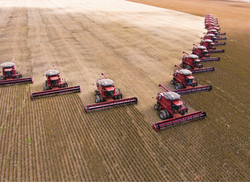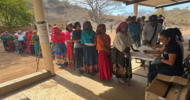
A CDC review of its own ag investments between 1948 and 2000 concluded that 49% of the projects “were classified as failures or moderate failures in financial terms”
A growing proposition
By Paul Mackintosh
Asia is figuring large in agribusiness allocations
In an initiative that seems to have survived the narrow domestic focus of the Trump administration, the US Agency for International Development (USAID) has just invited Southeast Asian agri-business innovators to submit expressions of interest (EOI) for potential partnerships with the agency. Perhaps this shows that even a populist know-nothing government recognises the importance of agribusiness investment and development.
Investment in agriculture and food has a wider priority for the global economy, comparable only to environmental issues. Analysing the sector in 2015,[1] McKinsey determined that, “if current trends continue, by 2050, caloric demand will increase by 70%, and crop demand for human consumption and animal feed will increase by at least 100%. At the same time, more resource constraints will emerge: for example, 40% of water demand in 2030 is unlikely to be met. Already, more than 20% of arable land is degraded”.
With large economies at varying levels of development and substantial, often subsistence, agricultural sectors, Asia Pacific is more directly invested – in the broadest sense – than most developed regions in agribusiness. And economic growth in itself is no solution.
The Asian Development Bank has concluded that: “While Asia’s economic growth and ongoing structural transformation deepen the complexity in managing the limited natural resources required for food security, many pockets of Asia continue to struggle with high levels of poverty and poor nutrition”.
As the preamble to the first ever Future Food Asia Award, which debuted in Singapore in May this year, states, “with 4.5 billion people in a fragmented region, APAC [Asia Pacific] needs a more developed innovation ecosystem to address local challenges, such as its lower per capita GDP [gross domestic product], vastly varying geographies, and evolving food consumption patterns”. Investment and structures for allocating capital are obviously going to be crucial to the development of this ecosystem.
Challenges and opportunities
Agribusiness represents a substantial opportunity as well as a priority or even a problem. “Sensing an opportunity, strategic and financial investors are racing to capture value from technological innovation and discontinuities in food and agriculture. Since 2004, global investments in the food-and-agribusiness sector have grown threefold, to more than US$100 billion in 2013”, notes the McKinsey analysis.
In Asia meanwhile, “agriculture and agribusinesses are key drivers behind the ASEAN [Association of Southeast Asian Nations] region’s economic growth. Southeast Asia is one of the most productive agricultural baskets in the world”, as the USAID documentation states. Furthermore, “ASEAN is also strategically located between major East Asia and South Asia markets, making it an ideal supply and processing base for agribusinesses with an eye for expansion and growth”, while “over half the total population in Southeast Asia depend on agriculture for their livelihoods”.
McKinsey notes that, “a projected surge in demand for protein in emerging markets, especially pork in China, would create opportunities for companies to grow in core production and supporting industries such as breeding, animal-health testing, feed, and vaccines”. Additionally, “in China alone, the cold-storage-and-transportation market generates $12 billion to $18 billion in revenues and is expected to grow 10%-15% annually to meet the country’s expanding meat, dairy, and vegetable demand”.
Unfortunately, no one suggests that investment in agribusiness is risk free. In fact, the Commonwealth Development Corporation’s (CDC) retrospective review of over 50 years of its own investment in “commercial smallholder and estate agriculture and agro-processing in Sub-Saharan Africa and Southeast Asia and the Pacific between 1948 and 2000” concluded that 49% of the projects “were classified as failures or moderate failures in financial terms”, leading CDC to conclude “that agribusiness investments are risky, particularly when the investment is in a start-up.”
Allocations to agribusiness
Despite the risks, some investment managers present agribusiness as a specific differentiating offer to institutions and high net worth (HNW) investors.
Singapore-based investment platform Milltrust International offers “institutional asset management and wealth management solutions”, with specialist expertise in agricultural as well as environmental themes, and offers several funds as well as other products.
“Investment in agriculture as an asset class can provide significant benefits including income generation, inflation protection and exposure to the very real themes of global food demand and land scarcity,” said Griff Williams, chief investment officer of Milltrust Agricultural Investments, upon the launch of the fund’s MAI Australia Buy & Lease Fund. The fund targets the acquisition of “cashflow-positive farms and farmland assets, including permanent crops, arable, and pastoral farmland”, in Australia and New Zealand.
Singapore-based dedicated Asian agribusiness investment fund Caudex Asia (Caudex) invests “from farm to fork – including seed production, tissue culture, crop sciences, land holdings, plantations, forestry, fertiliser, disease/pest control inputs, feed-meal, waste recovery, recycling, post-harvest technology, carbon credits, logistics, transportation, processing, distribution, marketing and farm equipment leasing”.
In direct investment, meanwhile, investment in agribusiness is hardly a new theme for Asia Pacific private equity firms. Take for example Olympus Capital Asia, one of the region’s longest established firms, which declares that since 1998 it “has made numerous successful investments in this sector, across multiple markets and subsectors”, as “Olympus believes the favourable demand dynamics and changing consumer preferences in the agribusiness and food sector in Asia make it a highly attractive area for investment”.
Significant investments by Olympus in the sector include Japan’s Arysta LifeScience Corp, “the world’s largest privately held agrochemical company”, which it sold to Permira in 2007 for $2.2 billion, and China’s Huaxia Dairy Farm Ltd, which Olympus has, and remains invested in, through a series of rounds, one alongside Singapore’s GIC.
Shanghai and Singapore-based growth capital investor CMIA Capital Partners similarly maintains a strong agricultural focus, especially in China. Portfolio investments include China Minzhong Food Corporation Ltd, “a leading integrated vegetable processor in China”; Fujian Dongshan Haikui Aquatic Products Co Ltd (Fujian Dongshan Haikui), “a leading seafood processor and exporter in Fujian”; and Hunan Longzhou Farm Equipment Holdings Co Ltd, “a leading agricultural machinery manufacturer”. Fujian Dongshan Haikui was listed on the Frankfurt Stock Exchange in 2012.
For those who prefer to keep their investments public and liquid, meanwhile, exchange-traded funds (ETFs) can serve as another vehicle for investors targeting this area. For example, the PowerShares Global Agriculture Portfolio (Fund) is based on the NASDAQ OMX Global Agriculture Index, because it claims this “is designed to measure the overall performance of the most liquid, globally traded companies involved in agriculture and farming-related activities.”
Outside the US, which has 41.09% of its allocation, it allocates to Malaysia (8.37%), Canada (7.8%), Indonesia (5.78%), Australia (5.24%), and Singapore (4.82%). As of mid-June 2017, this fund had just under $22.53 billion in assets. Clearly, Asia is figuring large in agribusiness allocations, even for sector-focussed funds with no special geographical bias.
Social impact
In agribusiness, though, broader social and environmental dimensions are rarely far behind. Southeast Asia’s small and medium-sized agribusinesses, “often suffer from low productivity and declining growth rates. These businesses have limited access to inputs, information, technology, markets and affordable working capital as well as growth capital to expand their business”, the USAID materials state. “These factors highlight the need for improved access to information, technology, and private capital for agribusinesses in order to promote market systems development for not only the member economies that make up ASEAN, but for ASEAN as a region”.
Caudex includes environmental, social and governance (ESG) criteria in its investment process, including “ethical practices, community welfare and ecological safety, to identify potential risks involved in non-compliant investments. It states: “We believe that long-term sustainability is crucial and that enduring success necessarily means alignment with our partners, within the larger community, including all stakeholders”.
The Committee on World Food Security’s ten Principles for Responsible Investment in Agriculture and Food Systems remain as anchors for investment into agribusiness and the agricultural sector. As they maintain, “responsible investment in agriculture and food systems is essential for enhancing food security and nutrition and supporting the progressive realisation of the right to adequate food in the context of national food security”. And in that statement, “essential” remains balanced by “responsible”.
[1] Pursuing the global opportunity in food and agribusiness, by Lutz Goedde, Maya Horii, and Sunil Sanghvi, McKinsey, 2015













